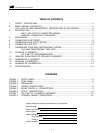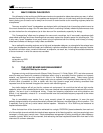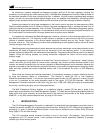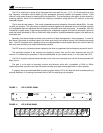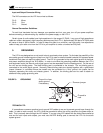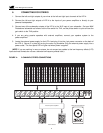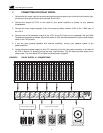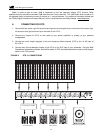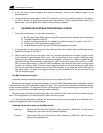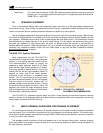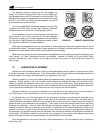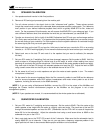
2. M&K’S DESIGN PHILOSOPHY
Our philosophy is that exciting and lifelike sound and music reproduction takes place when your ears, in effect,
become the recording microphones. Our speakers are designed to allow you to hear exactly what the microphones
heard, placing you as close or as far away from the music or sound source as the recording engineer placed the
microphones.
Too many so-called "music" loudspeakers are designed with a philosophy that all recordings should sound as
if the music comes from a stage 10 or 20 rows distant, even if a recording is closely miked with performers as close
as a few inches from the microphones (as is often done on film soundtracks, especially for dialog).
This "homogenizing" effect may be pleasant for some music recordings, but it inaccurately reproduces both
close-miked recordings and those recordings that accurately capture the acoustic space of a recording site. This
is why many "music" speakers do so poorly when trying to reproduce both the intensity and intimacy of closely
miked sound effects and dialog on today's best soundtracks.
As an audiophile recording engineer and a high-end loudspeaker designer, my strong belief has always been
that a good loudspeaker should accurately and realistically reproduce whatever the microphone captured, whether
the source is a human voice, a musical instrument, an explosion, car crash, etc.; including the acoustical ambiance
of the environment in which the source was recorded.
Ken Kreisel
co-founder and CEO
M&K Sound Co.
3. THE LOGIC BEHIND BASS MANAGEMENT
OBSERVATIONS by Ken Kreisel
Engineers mixing multi-channel audio (Stereo, Dolby Surround, 5.1 Dolby Digital, DTS, and other surround-
sound formats) are faced with numerous challenges when trying to accurately monitor complex and dynamic
material, and determine how this material will sound in its intended playback space. These issues include
reproducing 5, 7, or more channels of full range audio, plus an optional Low Frequency Effects channel (LFE), all
of which have a bandwidth to 10Hz or below, with very high dynamic range, and achieving consistent bass
response from all the channels throughout the control room monitoring area.
Any studio designer will tell you that for a stereo mix environment it is crucial that the left and right monitor
speakers, when in their selected studio location, have near identical bass response when measured at the mixer's
position. No less is true in multichannel mixing. Proper low frequency equalization and mixing decisions are
difficult, if not impossible, unless all 5.1 or more channels have the same bass frequency response at the mixers
listening position.
Due to unavoidable room modes, five or more correctly placed full range speakers, (in even the most
perfectly designed studio) will produce dramatically different low frequency characteristics at the mix position. This
is especially true for the very crucial center channel speaker. Variations of 10 to 20dB may be measured at
frequencies below 80Hz.
When the bass from all the channels is redirected into a single, PROPERLY placed subwoofer, then each and
all of the multiple channels exhibits the identical bass response at the listening position, and gives surprisingly even
coverage in virtually every control room. Simply stated bass management is putting an electronic bass frequency
crossover (typically 80Hz) on all the channels, and redirecting the bass frequencies below 80Hz from each of the
channels to a common subwoofer.
Bass Management Controller
4




